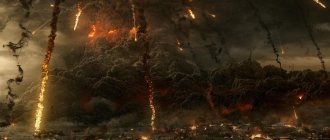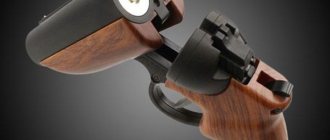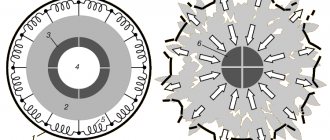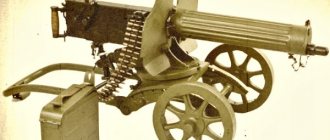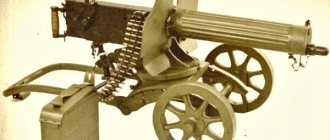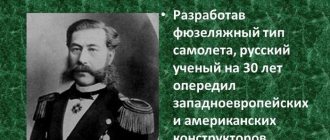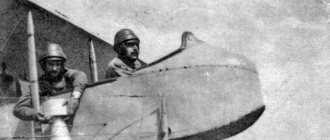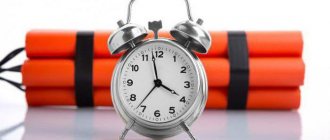Vengeful Edison
Hiram was born in 1840 in the provincial town of Sangerville (Maine), graduated from elementary school, and then got a job first in a local workshop for the production and repair of carriages, and then in his uncle’s small company that produced lighting gas generators for lanterns. It was here, according to biographers, that the young man showed his ability to invent.
How the Maxim machine gun became the world's first weapon of mass destruction
However, the ambitions of the young designer did not allow him to stay in one place for long. He made a not very successful attempt to found his own business, changed employers and cities more than once, worked in factories, laboratories, and design bureaus. By the early 1870s, already burdened with considerable experience and a reputation as a talented engineer, Maxim moved to New York, where he became interested in a promising and innovative field - electricity.
By that time, a real electrical fever had developed in the USA, capitalists were dividing up a new and promising market, and the famous War of Currents was going on - the confrontation between Edison and Nikola Tesla over the use of direct and alternating currents. And Maxim threw himself headlong into this fight, offering his technical solutions and new electrical appliances. His employer was the US Electric Lightning Company.
Rumor has it that Maxim’s inventive activity quickly attracted the attention of competitors, and the financial and industrial lobby that supported Edison decided to get rid of the ambitious upstart. And allegedly Edison’s “agents” persuaded the management of the American company to give Maxim a good position, but somewhere away from the USA. And so it happened, the inventor was offered to go to London for 10 years and for $20 thousand a year (a very significant amount at that time) to compile reports on new developments in Europe, and that there would be no inventions in electrical engineering. This is an honorary link. Maxim thought and agreed.
Links[edit]
- Great Inventors and Inventions. Courier Dover Publications. July 10, 1997. ISBN 9780486297842.
- ↑
They all laughed...: From light bulbs to lasers: fascinating stories. HarperCollins. June 30, 1993 p. eleven . ISBN 9780060924157. Hiram Maxim and the Light Bulb. - Encyclopedia of Military Equipment and Innovation. Greenwood Publishing Group. 2004. ISBN. 9781573565578.
- The American Aviation Experience: A History. SIU Press. 2000. ISBN 9780809323715.
- ↑
The Playful Crowd: Twentieth-Century Entertainment Venues. Columbia University Press. 2005. p. 45. ISBN 9780231127240. Captive flying machine. - Sir Hiram Maxim. Encyclopædia Britannica.
- Who's Who in the First World War. Psychology Press. June 1, 2002. ISBN 9780203438817.
- "Hiram Stevens Maxim". Grace's Guide. Retrieved December 6, 2013.
- "Sir Hiram Maxim's Great Invention", The Times
, 19 July 1910. - ^ abc Malcolm Brown 100th Anniversary of "Maxim's Murder Machine" New York Times
, November 26, 1985 - Hiram's inventions
- Chinn, George M. (1951), The Machine Gun
,
i
, Bureau of Ordnance, para. 127. - Ben Weinreb and Christopher Hibbert, Encyclopedia of London
, ISBN 0-333-57688-8
Serbia House - ^
Actions of Sir Hiram Maxim,
The Times
, 16 January 1915 - Penrose, Harald (1967). British Aviation: The Early Years
. London: Putnam. pp. 22–23. - Penrose 1967, p. 25
- "The Mansion in Baldwin Park". News Buyer
. Retrieved February 23, 2022. - Penrose 1967, pp. 33-4
- "The Death of Sir Hiram Maxim. Famous inventor, automatic weapons and aeronautics." The Times
. November 25, 1916 - Wragg, D.; "Flight Before Flight", Osprey (1974).
- Beryl, Becker (1967). Dreams and realities of conquering the skies
. New York: Athenaeum. pp. 124–125. - My life
. - Maxim Leads Air Company. Grahame-White, Bleriot and Maxim Company, with a capital of $1,000,000." New York Times
. March 29, 1911 p. 1. Sir Hiram Maxim, who has just retired from the munitions firm with which his name has been so long associated, will become chairman of the new company, which will be known as the Grahame-White, Bleriot, and Maxim Company, limited, with a common share capital 200,000 ($1,000,000). - “The resignation of Sir Hiram Maxim. The Inventor and Aviation", The Times
, 23 March 1911. - ↑
Joseph McCabe (1950).
The Rationalist Encyclopedia: A Guide to Religion, Philosophy, Ethics, and Science
(2nd ed.). Tue. 384. He was a member of the firm of Vickers' Sons and Maxim. Maxim was an aggressive atheist (personal knowledge) and the compiler (together with a real writer) of a collection of harsh criticism of religion... - Freethinker, Volume 92
. GW Foote. 1972. p. 45. Now Maxim is really a militant atheist! - ^ abc Hiram Stevens Maxim (1913). Notes of Lee Hung Chang
. Watts & Co. - ^ ab Notes of Lee Hong Chang
, Preface, px - "Who Made America". PBS.
- "No. 27122". London newspaper
. October 3, 1899 p. 6011. - "The City of Two Knights". Sangerville Public Library.
- ^ ab Hawkey, Arthur (2001). The Amazing Hiram Maxim
. Staplehurst: Spell. - "No. 27285". London newspaper
. February 15, 1901 p. 1145. - "Index entry". FreeBMD
. HE IS WITH . Retrieved October 10, 2022. - "No. 29892". London newspaper
. January 5, 1917 p. 317. - "Hiram Percy Maxim, No. 1 Wireless Hobbyist, Youth Rights Protected." New York Times
. February 23, 1936. Radio amateurs, numbering more than 45,000 in the United States, are mourning the loss of a friend and loyal ally with the passing of Hiram Percy Maxim of Hartford, Connecticut. Experienced experimenters of the pre-war days remember Mr. Maxim as an ardent radio amateur by the musical tone of his spark-gap quenchers that recorded the call letters of his pioneer station. - Maxim, Hiram Percy. Genius in the family, side science. Retrieved August 6, 2022. “In the spring of 1875 we moved to Fanwood, New Jersey. My father usually left New York on Saturday afternoon and stayed with us until Monday morning."
- "Boogeyman of Noise". Time
. January 4, 1932. Retrieved August 21, 2007. While mental hygienists, efficiency experts, and city officials bemoaned the maddening effects of city noise, Hiram Percy Maxim was making noise suppressors in Hartford, Connecticut. Last week he announced that his company, Maxim Silencer Co., of which he is president, and his only son Hiram Hamilton, chief engineer, whose plant is on Asylum Street, Hartford, will — in addition to continuing to manufacture shotgun silencers, exhaust systems engines, safety valves, air outlets, in fact all types of pipes from which gas is released - will offer consultation services to reduce noise. - Maxim, Hiram Percy (1936). Genius in the family
. London: Michael Joseph Ltd. - "Index entry". FreeBMD
. HE IS WITH . Retrieved October 10, 2022. - "Index entry". FreeBMD
. HE IS WITH . Retrieved October 10, 2022. - Hawkey, Arthur (2001). The Amazing Hiram Maxim
. Staplehurst: Spell. ISBN 1-86227-141-0. - Hiram Stevens Maxim (1908). Artificial and natural flight. Whittaker. artificial and natural flight.
- Jump up
↑ Hiram Stevens Maxim (2009). New maritime collision avoidance system. Schwarz Press. ISBN 978-1-4446-0553-2. Archived from the original on July 24, 2012. Retrieved September 20, 2009. - Hiram Stevens Maxim (1915). My life . Methuen & Co., Ltd. ISBN 9781408609675.
- Hiram Stevens Maxim (1904). Facts and Misconceptions of Monte Carlo. Grant Richards.
Satanic Marketing
The designer himself said in his autobiography that the idea to create an automatic weapon came to him back in 1854, when he was only 14 years old. His father asked him to make drawings of a multi-shot lever-action rifle (Winchester type), he complied with the request, and at the same time thought that it would be nice to improve the entire system so that it would work automatically. Maxim made sketches of a new device and showed them to a certain local gunsmith and his uncle, the owner of the very factory where he worked. The gunsmith said that he couldn’t build the strange device because he didn’t have the necessary tools, and the uncle shrugged: maybe it could be done, but manufacturing would cost a hundred dollars, and the result wouldn’t cost even a hundred cents.
At an advanced age, Sir Maxim became seriously interested in aeronautics and designed several airplanes with steam engines. In the photo: the inventor with a three-propeller aircraft created in 1910. Not a single Maxim airplane ever took off.
WHA/Vostock photo
Maxim made his second approach 12 years later, in 1866. Once in Georgia, where the inventor was on business, he was invited to a shooting range and offered to fire several times from a rifled army musket. He was amazed by the strong recoil - how much energy wasted! What if you use it to reload and cock the hammer? Allegedly, it was then that Maxim made the first sketches, and a few years later he prepared drawings of the machine gun. Unfortunately, there is no documentary evidence of this; in addition, it seems somewhat strange that the pragmatic inventor, who always protected the rights to his developments, did not file any patent applications this time. Perhaps it was just a mental exercise, or perhaps it was an invention.
Already working in London, having barely prepared the first drawings of a machine gun, Maxim immediately patented all his solutions, even though the first sample was very far from perfect. The main engineering idea was to use a short barrel stroke for reloading the weapon and a belt for feeding cartridges. A year later, having built a working and perfected model of a machine gun, like a true patriot of the United States, the inventor offered his development to Washington. However, the generals there only twirled their fingers at their temples - why is this necessary, we have Gatling. Disappointed, Maxim decided to settle permanently in England and begin the fight for the European market. He registered a weapons company named after himself and produced several demo samples of the machine gun for presentation to Albion military officials, but they also did not appreciate the new product.
Why weapons from a century ago are being used in modern conflicts
In a difficult situation, the novice gunsmith showed himself to be a good marketer. Having obtained permission from the authorities to conduct demonstration shooting in one of the most prestigious places in London - Hampton Garden, he began demonstrating the machine gun to representatives of the political and business elite. Maxim himself sat down at the trigger and let influential guests shoot. The outlandish attraction amazed some, and bewildered others, but the famous banker Nathaniel Rothschild became interested and agreed to finance the release and promotion of the new product. Thanks to a high patron, the powerful Vickers concern and the British Army became interested in the machine gun, which in 1887 acquired three maxims for testing.
In addition, with Rothschild’s money, Hiram Maxim could tour Europe with his weapons, and his patron’s connections opened the doors of palaces and government residences for him. Maxims were used by the German Kaiser Wilhelm, the Russian peacemaker Tsar Alexander III, and the Danish King Christian IX. Less far-sighted ones, like the Danish king, grumbled about the consumption of ammunition, but the Kaiser of Germany quickly realized that the game was worth the candle, and ordered the purchase of a machine gun, and later a production license. Already in 1888, the cannon king Friedrich Alfred Krupp entered into an agreement with Hiram Maxim for the production of his machine guns, and in 1891 (Ludwig Loewe & Co) acquired the rights to produce “automatic machine guns”.
One of Maxim’s marketing tricks was the creation of an ominous, almost mystical aura around the machine gun. The inventor himself often called his brainchild a “death machine” and, for greater persuasiveness, he slightly “corrected” its performance characteristics: the real technical rate of fire of the machine gun was 600 rounds per minute, but in the advertising materials there was a “diabolical” 666. It worked!
Patents[edit]
- US Patent 208,252 - Electric lamp
- US Patent 230310 - Electric lamp.
- US Patent 230,953 - Electric lamps
- US Patent 230,954 - Process for removing air from bulbs of electric lamps.
- US Patent 230,309 - Electric lamp.
- US Patent 234835 - Electric lamp
- US Patent 237198 - Process for manufacturing carbon conductors.
- US Patent 244277 - Electric lamp
- US Patent 247083 - Coal production process.
- US Patent 247084 - Electric Incandescent Lamp.
- US Patent 247085 - Process for manufacturing carbon conductors.
- US Patent 247380 - Electric lamp
- US Patent 255,308 - Electric Meter
- US Patent 277,846 - Process for producing carbon for incandescent lamps.
- US Patent 283,629 - Electric lamp
- US Patent 321,513 - Machine gun
- US Patent 405,239 - Apparatus for producing
filaments
for incandescent lamps. - US Patent 405170 - Manufacture of
filaments
for electric lamps. - US Patent 430212 - Manufacture of Explosives.
- US Patent 618703 - Apparatus for making filaments for electric lamps.
- US Patent 618704 - Method of producing filaments for electric lamps.
- GB 189700207, Maxim, Hiram Stevens and Louis Silverman, "Improvements in the Firing Mechanism of Automatic Weapons", published October 30, 1897.
- GB 189607468, Maxim, Hiram Stevens, "Improvements in Automatic Weapons", issued 27 February 1897, gas action for machine guns.
- GB 189607045, Maxim, Hiram Stevens, "Improvements in Automatic Machine Guns", issued 13 March 1897, machine gun breech.
Flying locomotive
It is interesting that, having made a name for himself and amassed capital from weapons, Maxim did not stop working on civilian projects. For example, he designed a giant carousel for one of the most famous amusement parks in Britain, Pleasure Beach in Blackpool. And at a very respectable age he became seriously interested in aeronautics and created several models of aircraft with steam engines, fortunately he already had the money for this.
In 1894, several years before the first flight of the Wright brothers' airplane, Maxim built and tried to fly a giant steam airplane of his own design. It was a giant “shelf” with four rows of wings, the span of which exceeded 30 meters, and the total area was 522 square meters. The height of the device is more than 10 meters, weight is 2.5 tons. There were two engines, each with a power of 150 horsepower, they drove two two-blade propellers. The runway served as a railway track, but how the device was supposed to land is unknown.
According to calculations, the take-off force of the machine was 3.5 tons, that is, almost a third greater than the mass of the airplane. During testing, the car accelerated to takeoff speed, after which it fell on its side and fell apart. No one bothered to restore the expensive airplane.
In 1900, the creator of the first machine gun, Hiram Maxim, was knighted by Queen Victoria herself.
Chronicle/Vostock photo
Lucky case
In 1881, Hiram Maxim received a gold medal at the First World Electrical Exhibition, which was held in Paris. The award went to the inventor for creating an arc lamp in which the current was automatically regulated.
The list of areas in which he came up with innovations is surprising. From his first childhood invention, a mousetrap for a grain storage facility, more than 250 patents followed.
Realizing that the electrical engineering industry was the most profitable, he began producing his own light bulbs. But at the first electrical exhibition, Maxim realized that he needed to master new directions.
How Maxim and Colt shared a machine gun
The appearance, and most importantly, the terrifying experience of using the first maxims became an incentive for work on similar weapons in many countries. Over the course of about 10–15 years, about a dozen new, more or less successful models appeared. The main competitors of the Maxim on the world market were the French Hotchkiss machine gun (model 1897) and the Colt model 1895 (M1895), developed by the great John Browning. Maxim more than once accused the American company of patent piracy and tried to sue it, although not very successfully.
At the same time, the Browning machine gun did not look a bit like the Maxim. The principle of automation was also completely different - a gas engine with a lower piston in the Colt versus a short barrel stroke in the Maxim. But some American authors note that Browning nevertheless took a look at some of Maxim’s solutions and, wanting to hide this, unnecessarily complicated his design. One of the distinctive features of the American machine gun was the lever located under the barrel; when firing, it made a swinging motion. If the machine gun was too low, the lever began to “dig up” the ground, for which the M1895 was nicknamed the “potato digger.” The American military nevertheless recognized that the Browning machine gun was inferior to the Maxim design, and in 1905 Colt began producing licensed Maxims as well. One of the leading importers of M1895 Colts was the Russian Empire, which purchased these weapons before the First World War.
External links [edit]
| Wikimedia Commons has media related to Hiram Stevens Maxim . |
| Wikisource has original text related to this article: Hiram Maxim |
- Works by Hiram Maxim at Project Gutenberg
- Works by or about Hiram Maxim at Internet Archive
- A Tale of Two Knights: Sir Hiram Maxim
- H. Maxim and A. Liventaal
- Coaster Kingdom
- Fireboat Mammoth, designed by HS Maxim,. ME Scientific American
. - Hiram S. Maxim
- Hiram Maxim on GunsTribune
| Authoritative control |
|
Notes
- Maxim, Hiram Stevens
- article from the Great Soviet Encyclopedia. - Uspensky L.V.
From the word to the surname and back // You and your name. Stories about names. - L.: Children's literature, 1972. - ↑ 1 2 3 4 Zabarinsky P.
Hiram Maxim // Youth technology: magazine. - 1934. - August (No. 8). — P. 54-57. - Daniel Makaroff.
[www.popmech.ru/article/2029-prodavets-smerti/ Merchant of Death: Man and Machine Gun].
Popular Mechanics
. Fashion Press (2007). Retrieved May 28, 2010. [www.webcitation.org/65JhDlLW2 Archived from the original on February 9, 2012]. - Death Of Sir Hiram Maxim. A Famous Inventor, Automatic Guns And Aeronautics, The Times (25 November 1916).
- Beryl Becker.
Dreams and Realities of the Conquest of the Skies. - New York: Atheneum, 1967. - P. 124–125.
Excerpt characterizing Maxim, Hiram Stevens
A week later there were already fifteen thousand inhabitants in Moscow, after two there were twenty-five thousand, etc. Rising and rising, this number by the autumn of 1813 reached a figure exceeding the population of the 12th year. The first Russian people who entered Moscow were the Cossacks of the Wintzingerode detachment, men from neighboring villages and residents who fled from Moscow and were hiding in its environs. The Russians who entered devastated Moscow, finding it plundered, also began to plunder. They continued what the French were doing. Convoys of men came to Moscow in order to take away to the villages everything that had been thrown along the ruined Moscow houses and streets. The Cossacks took what they could to their headquarters; the owners of the houses took everything that they found in other houses and brought it to themselves under the pretext that it was their property. But after the first robbers came others, third ones, and the robbery every day, as the number of robbers increased, became more and more difficult and took on more definite forms. The French found Moscow, although empty, with all the forms of an organically correctly living city, with its various departments of trade, crafts, luxury, government, and religion. These forms were lifeless, but they still existed. There were rows, benches, stores, warehouses, bazaars - most with goods; there were factories, craft establishments; there were palaces, rich houses filled with luxury goods; there were hospitals, prisons, public places, churches, cathedrals. The longer the French stayed, the more these forms of urban life were destroyed, and in the end everything merged into one indivisible, lifeless field of plunder. The robbery of the French, the more it continued, the more it destroyed the wealth of Moscow and the forces of the robbers. The robbery of the Russians, with which the occupation of the capital by the Russians began, the longer it lasted, the more participants there were in it, the faster it restored the wealth of Moscow and the correct life of the city. In addition to the robbers, the most diverse people, drawn - some by curiosity, some by duty of service, some by calculation - homeowners, clergy, high and low officials, merchants, artisans, men - from different sides, like blood to the heart - flowed to Moscow. A week later, the men who arrived with empty carts to take away things were stopped by the authorities and forced to take the dead bodies out of the city. Other men, having heard about the failure of their comrades, came to the city with bread, oats, hay, lowering the price for each other to a price lower than the previous one. Artels of carpenters, hoping for expensive earnings, entered Moscow every day, and new ones were cut from all sides, and burnt houses were repaired. Merchants opened trade in booths. Taverns and inns were set up in burnt houses. The clergy resumed services in many churches that had not burned. Donors brought looted church items. The officials arranged their tables with cloth and cabinets with papers in small rooms. The higher authorities and the police ordered the distribution of the goods left behind by the French. The owners of those houses in which a lot of things brought from other houses were left complained about the injustice of bringing all the things to the Faceted Chamber; others insisted that the French had brought things from different houses to one place, and therefore it was unfair to give the owner of the house those things that were found with him. They scolded the police; bribed her; they wrote ten times the estimates for the burnt government items; demanded assistance. Count Rastopchin wrote his proclamations. At the end of January, Pierre arrived in Moscow and settled in the surviving outbuilding. He went to see Count Rastopchin and some acquaintances who had returned to Moscow, and was planning to go to St. Petersburg on the third day. Everyone celebrated the victory; everything was seething with life in the ruined and reviving capital. Everyone was happy to see Pierre; everyone wanted to see him, and everyone asked him about what he had seen. Pierre felt especially friendly towards all the people he met; but now he involuntarily kept himself on guard with all people, so as not to tie himself to anything. He answered all questions that were put to him, whether important or most insignificant, with the same vagueness; Did they ask him: where will he live? will it be built? when is he going to St. Petersburg and will he undertake to carry the box? - he answered: yes, maybe, I think, etc. He heard about the Rostovs that they were in Kostroma, and the thought of Natasha rarely came to him. If she came, it was only as a pleasant memory of the long past. He felt free not only from everyday conditions, but also from this feeling, which, as it seemed to him, he had deliberately brought upon himself. On the third day of his arrival in Moscow, he learned from the Drubetskys that Princess Marya was in Moscow. Death, suffering, and the last days of Prince Andrei often occupied Pierre and now came to his mind with new vividness. Having learned at dinner that Princess Marya was in Moscow and was living in her unburned house on Vzdvizhenka, he went to see her that same evening. On the way to Princess Marya, Pierre kept thinking about Prince Andrei, about his friendship with him, about various meetings with him, and especially about the last one in Borodino. “Did he really die in the angry mood he was in then? Wasn’t the explanation of life revealed to him before his death?” - thought Pierre. He remembered Karataev, about his death, and involuntarily began to compare these two people, so different and at the same time so similar in love that he had for both, and because both lived and both died. In the most serious mood, Pierre drove up to the old prince's house. This house survived. It showed signs of destruction, but the character of the house was the same. An old waiter with a stern face who met Pierre, as if wanting to make the guest feel that the prince’s absence did not disturb the order of the house, said that the princess deigned to go to her rooms and was received on Sundays. - Report; maybe they’ll accept it,” said Pierre. “I’m listening,” answered the waiter, “please go to the portrait room.” A few minutes later the waiter and Desalles came out to see Pierre. Desalles, on behalf of the princess, told Pierre that she was very glad to see him and asked, if he would excuse her for her impudence, to go upstairs to her rooms. In a low room, lit by one candle, the princess and someone else were sitting with her, in a black dress. Pierre remembered that the princess always had companions with her. Who these companions were and what they were like, Pierre did not know and did not remember. “This is one of the companions,” he thought, looking at the lady in a black dress. The princess quickly stood up to meet him and extended her hand. “Yes,” she said, peering into his changed face after he kissed her hand, “this is how you and I meet.” “He’s often talked about you lately,” she said, turning her eyes from Pierre to her companion with a shyness that struck Pierre for a moment. “I was so glad to hear about your salvation.” This was the only good news we received for a long time. - Again, the princess looked back at her companion even more restlessly and wanted to say something; but Pierre interrupted her. “You can imagine that I knew nothing about him,” he said. “I thought he was killed.” Everything I learned, I learned from others, through third hands. I only know that he ended up with the Rostovs... What a fate!
